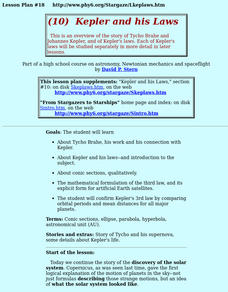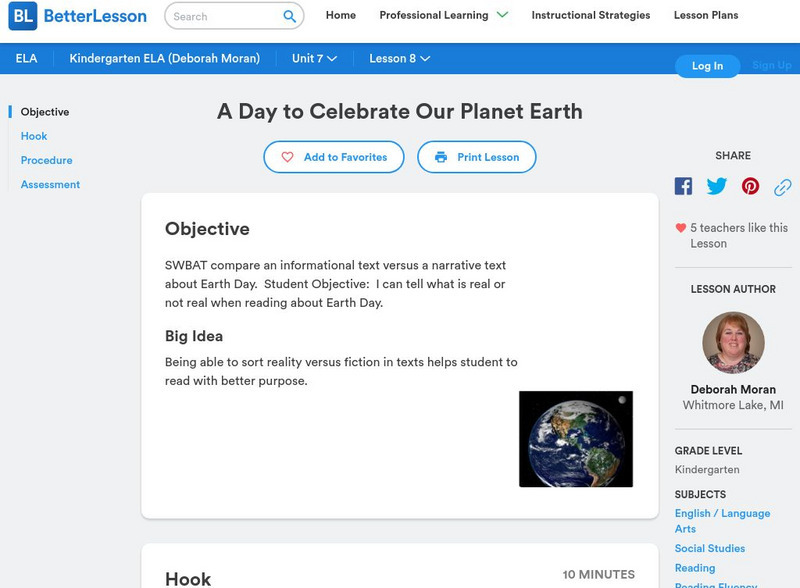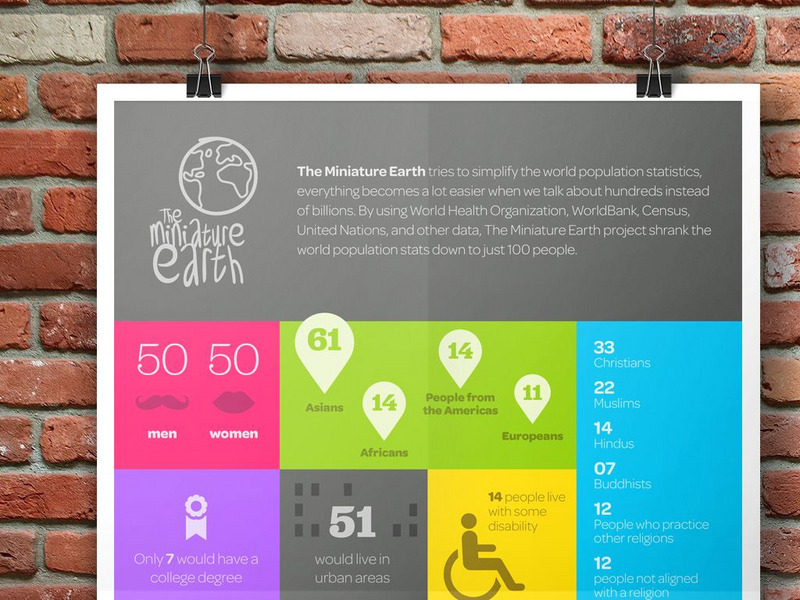Curated OER
Geology
Students, in groups, observe the effect of water and ice on surface features of the land. They alsoexplore erosion and deposition.
Curated OER
Flying Through the Solar System
Young scholars create a model of the solar system out of candy. They write a book about their travels through the Solar System, beginning at age ten and reaching Pluto at age seventy.
Curated OER
A Relatively Far Out Idea: Estimating
Students investigate methods of estimating through cooperative group activities, hands-on activities, the use of tables and graphs and an interactive video.
Curated OER
Kepler And His Laws
Pupils engage in an overview of the story of Tycho Brahe and Johannes Kepler, and of Kepler's laws. Each of Kepler's laws be studied separately in more detail in later lessons. They examine Kepler's 3rd law.
Curated OER
Text Structure 2
In this reading worksheet, students read different passages of text and fill out graphic organizers for each one. Students read 6 texts total.
Curated OER
Sky Watching
Learners examine telescopes and understand how they have helped us better understand the sky. In this astronomy activity students complete a worksheet and a lab activity.
Curated OER
Finding Jupiter's Moons
Students explore Jupiter's Moons. They calculate and predict the location of Jupiter's 4 large moons. In addition, they draw Jupiter with its moons correctly shown for the time of the observation.
Curated OER
Is There Really Life on Mars?
Students examine the work of scientists and determine how they test their theories.
Curated OER
A DISAPPEARING ACT Astronomy: Do Stars Always Shine?
Learners observe why stars are not visible during the day with a classroom demonstration using an index card punched with holes.
Curated OER
Astronomical Scales
Pupils describe the different units of measurement. In this space science lesson, students calculate astronomical distances using a scale. They explain the significance of using scientific notation in expressing very small or very...
Curated OER
Have and Have-Not
Students describe the differences of people living in developed and underdeveloped countries. They also identify how each type of country uses their resources. They develop an ecological footprint of the countries discussed.
Crayola
Crayola: Extraterrestrials Visit Earth (Lesson Plan)
Your students will love wrapping up a solar system unit with this activity! Children make their own "Travel brochure," about earth, trying to encourage extraterrestrials to visit, by comparing our planet to theirs. This lesson plan also...
Better Lesson
Better Lesson: A Day to Celebrate Our Planet Earth
Learners will compare an informational text versus a narrative text about Earth Day. Included in this lesson are videos and pictures of the lesson in action, a printable Earth Day Venn Diagram, and a recycling activity.
NASA
Nasa: Space Place: Messenger: Planet Mass Comparison
Compare the masses of planets in this interactive animation. Simply pile a number of Earths on one side of the scale, to balance with the mass of one Jupiter. Then try this with all the planets.
CK-12 Foundation
Ck 12: Earth Science: Inner Versus Outer Planets
[Free Registration/Login may be required to access all resource tools.] Compares the characteristics of inner and outer planets.
NASA
Nasa: Sci Jinks: How's the Weather on Other Planets?
Compare weather here on Earth to other planets and moons in our solar system. You will find many similarities and differences.
PBS
Pbs Learning Media: Seasons on Earth and Mars
Compare the seasons on Earth and Mars with NASA imagery. Use this resource to visualize how the axial tilt of a planet influences its seasons and to compare data about seasonal changes on Earth and Mars. Support materials include:...
CK-12 Foundation
Ck 12: Earth Science: Inner Versus Outer Planets
[Free Registration/Login may be required to access all resource tools.] Compares the characteristics of inner and outer planets.
Physics Classroom
The Physics Classroom: Circular & Satellite Motion: Your Weight on Other Planets
Take a quick trip to the other planets, and hop on the scale to find out how weight there compares to weight on Earth.
Other
Miniature Earth: Comparative Demographics Worldwide
Miniature Earth reduces the world's population to 100 to underscore the dramatic differences in wealth, age, faith, education, environment, and health among people who live on this planet. An excellent apply-what-you-know site for...
NASA
Nasa Space Science Data Archive: Neptune Fact Sheet
Resource has text information to compare Neptune with Earth. Includes Neptune observational data, orbital data, magnetosphere, and atmosphere. Also contains an image of Neptune that can be enlarged.
ClassFlow
Class Flow: Layers of the Earth
[Free Registration/Login Required] This is a basic flipchart showing the layers of the earth compared to an egg.
ClassFlow
Class Flow: Layers of the Earth Ii
[Free Registration/Login Required] This basic flipchart compares the layers of the Earth to an apple.






















